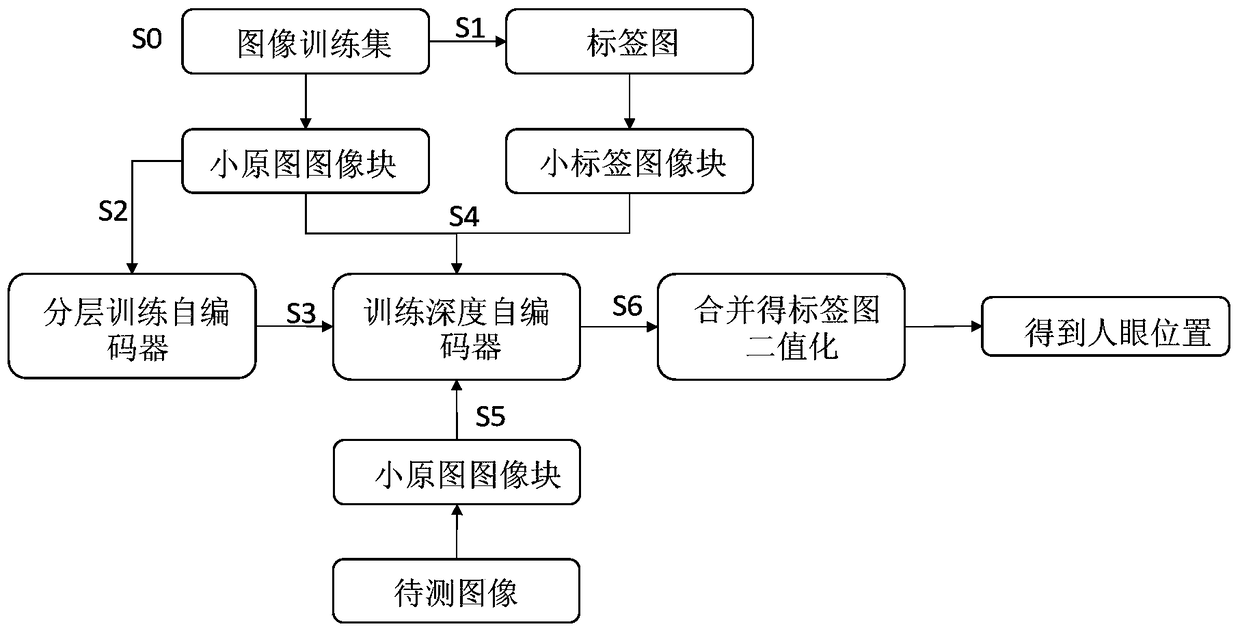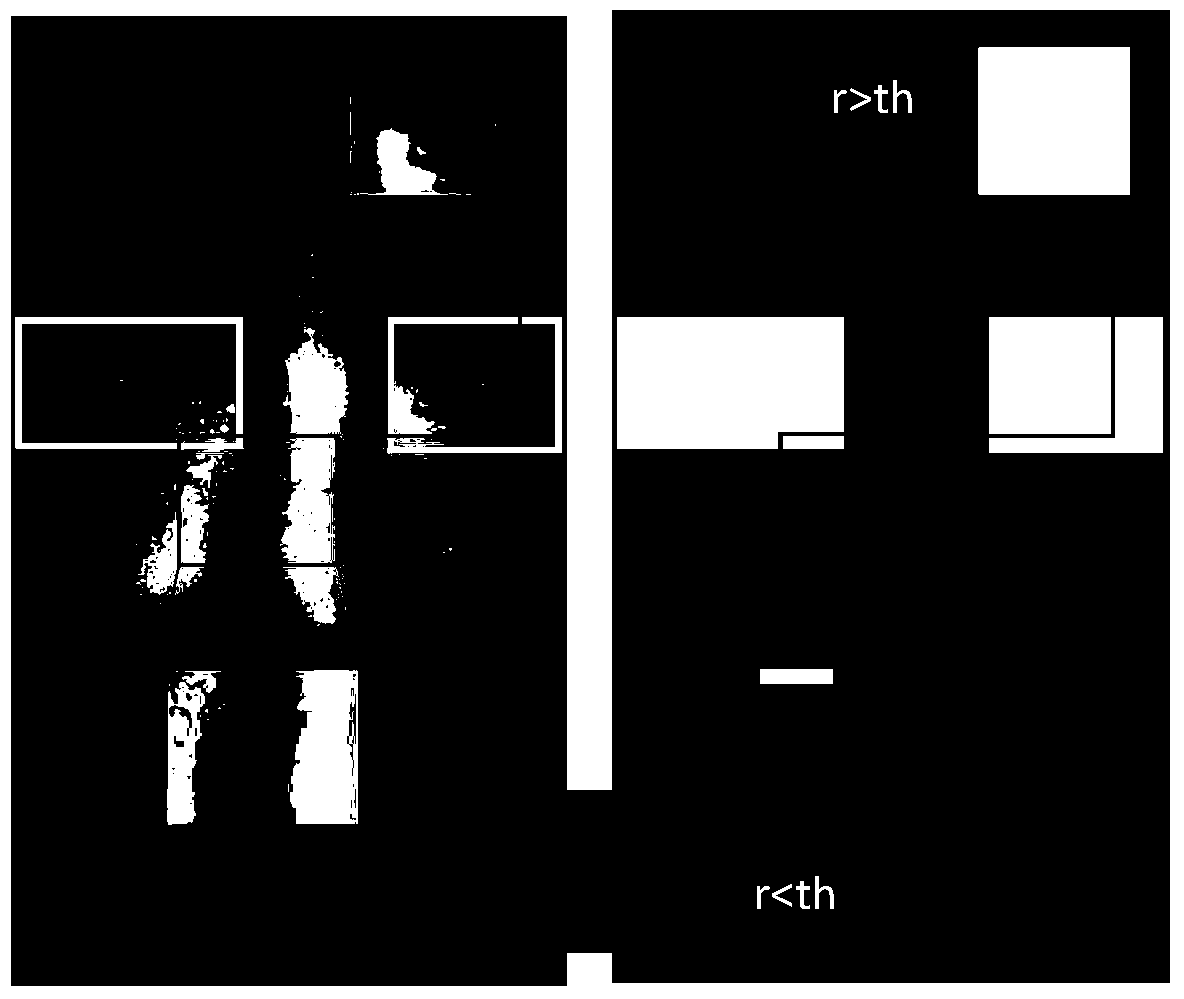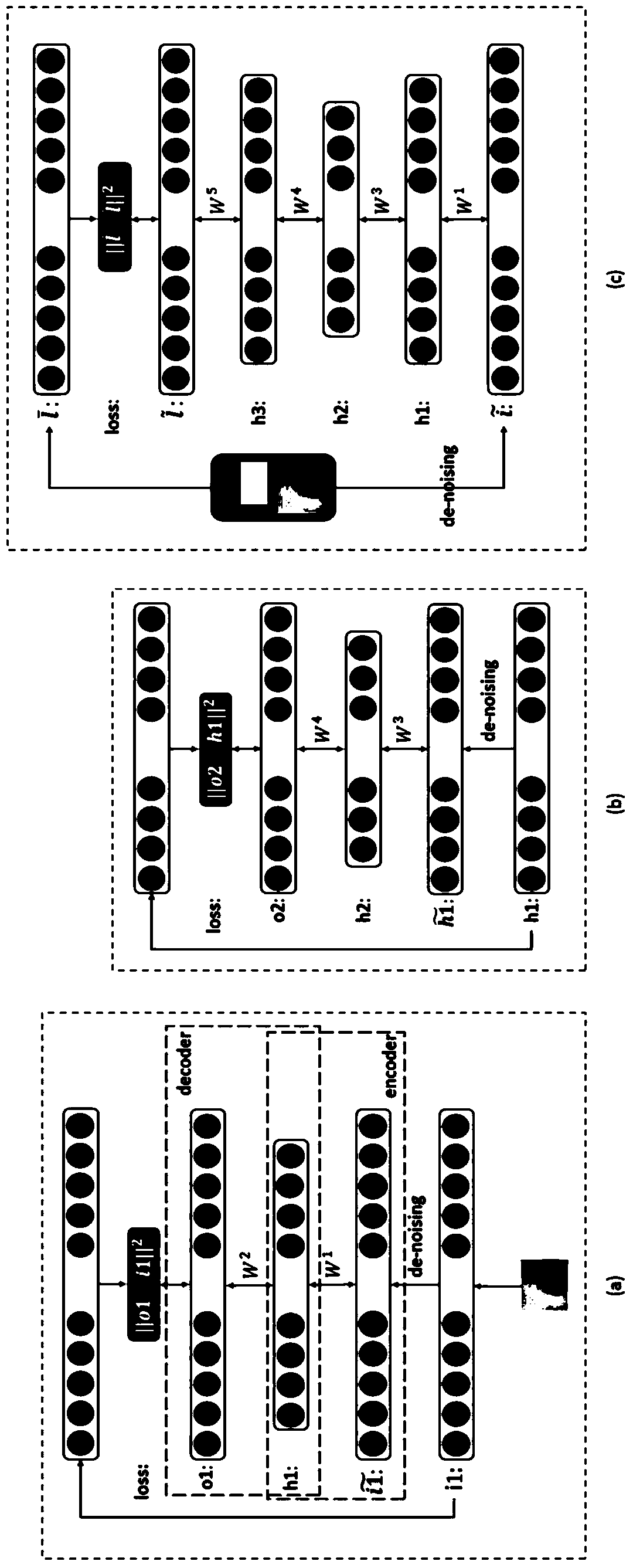Human eye detection and localization method based on deep autoencoder
A self-encoder and human eye detection technology, which is applied in the direction of instruments, acquisition/recognition of eyes, character and pattern recognition, etc., can solve the problem of not being able to deal with the deformation, viewing angle change and occlusion of the target detection target, and it is difficult to achieve real-time Sexuality, it is difficult to achieve real-time problems, to avoid construction and non-maximum suppression operations, fast human eye detection and positioning, and improve the speed of detection
- Summary
- Abstract
- Description
- Claims
- Application Information
AI Technical Summary
Problems solved by technology
Method used
Image
Examples
Embodiment Construction
[0019] In order to make the objectives, technical solutions, and advantages of the present invention clearer, the following further describes the present invention in detail in conjunction with specific embodiments and with reference to the accompanying drawings.
[0020] The present invention proposes a target detection and positioning method based on a deep autoencoder, and applies it to the detection and positioning of human eyes. This method uses the small image blocks randomly cropped from the training image and the corresponding small label image blocks cropped on the label map to train and learn the deep autoencoder, and obtain the mapping relationship between the small image block and the small label image block. Then use the learned deep autoencoder to generate a label map corresponding to the image to be tested, and finally determine the position of the human eye through binarization and coordinate projection of the label map. The key steps involved in the method of the...
PUM
 Login to View More
Login to View More Abstract
Description
Claims
Application Information
 Login to View More
Login to View More - R&D
- Intellectual Property
- Life Sciences
- Materials
- Tech Scout
- Unparalleled Data Quality
- Higher Quality Content
- 60% Fewer Hallucinations
Browse by: Latest US Patents, China's latest patents, Technical Efficacy Thesaurus, Application Domain, Technology Topic, Popular Technical Reports.
© 2025 PatSnap. All rights reserved.Legal|Privacy policy|Modern Slavery Act Transparency Statement|Sitemap|About US| Contact US: help@patsnap.com



